Oxygen Dead Zones
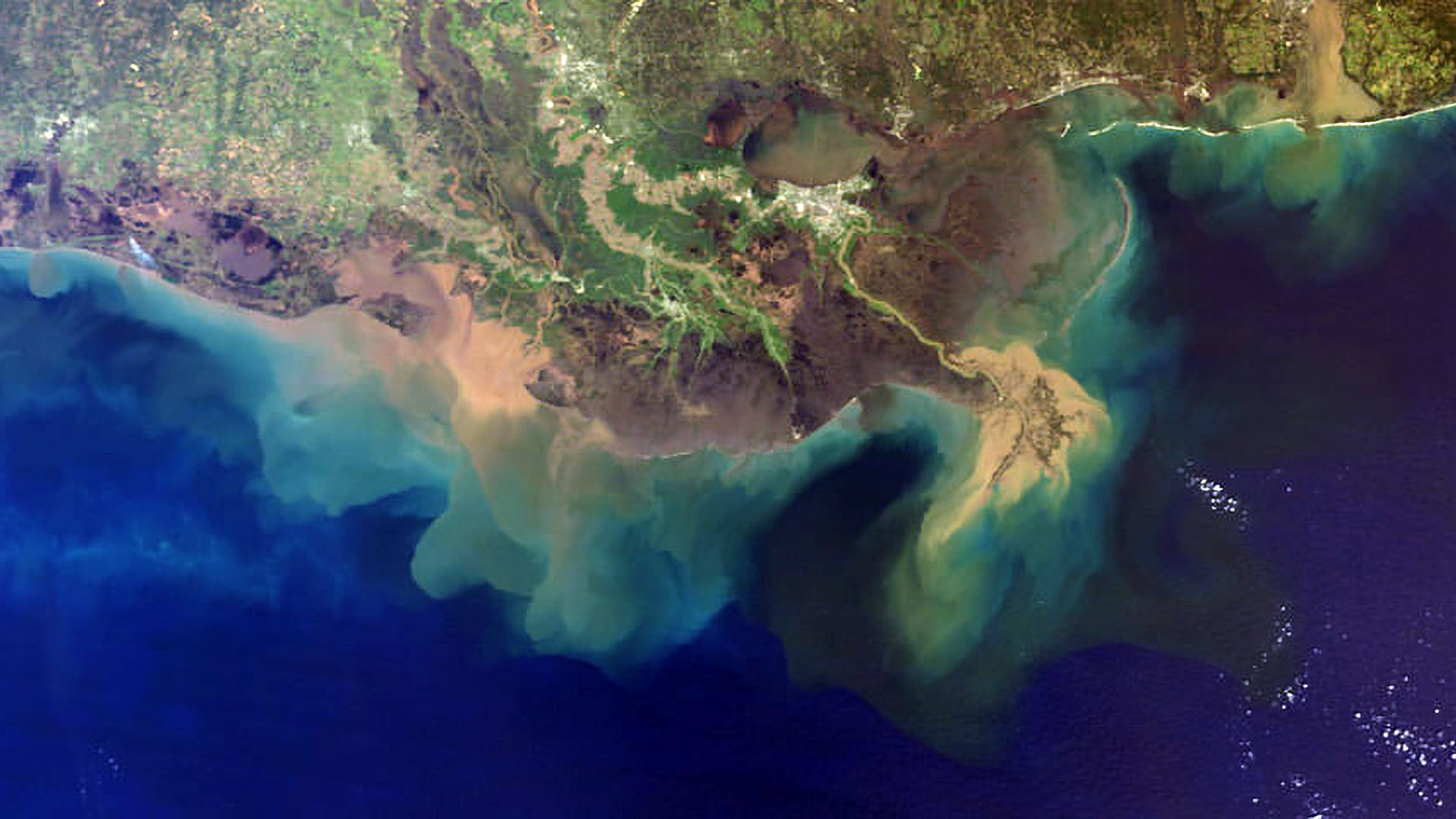
Low-oxygen “dead zones” and phytoplankton blooms like those shown here extending into the Gulf of Mexico are expanding in the global ocean due to a variety of factors, including climate disruptions, warmer ocean temperatures, and increasing nutrient runoff from fertilizers and wastewater on land. (Image courtesy of the National Atmospheric and Oceanic Administration).
What is a dead zone?
A strange thing happens when water from the Mississippi River empties into the Gulf of Mexico. Instead of supporting a rich ecosystem, the water, laden with nutrients from upstream, creates a massive dead zone, so named for its apparent lack of life. No fish or shellfish can be found in an area that, some years, equals the size of New Jersey. It’s the second largest dead zone in the world behind the Baltic Sea, and one of hundreds—perhaps as many as a thousand—that exist along coastlines worldwide.
Dead zones occur when the water lacks oxygen. Like us, marine animals require oxygen to breathe, and when oxygen levels drop too low they can suffocate. Under most circumstances, oxygen is plentiful. At the ocean’s surface, the gas enters water from the atmosphere, then diffuses into lower layers as they are mixed via wind and wave action. Plants and macroalgae growing in shallow areas also release oxygen as they photosynthesize. Animals thrive in these areas where a rich three-dimensional habitat produces abundant shelter, food, and breathable water.
Nutrients from upstream nourish these ecosystems where rivers drain into the ocean, but an overabundance of nutrients can be harmful. On land, people apply fertilizers to agricultural fields and lawns to stimulate plants to grow. These applications are high in nitrogen and phosphorous, two elements plants need to photosynthesize. But when fertilizers are used too often or applied too heavily, or when there is heavy rain, these nutrients wash off the land where they were applied, running downhill until they eventually reach the ocean. Vast quantities of fertilizer wind up in the river and ultimately the Gulf, where it does what it’s intended to do: It stimulates photosynthesis. But here, the photosynthesizers are algae and cyanobacteria.
These single-celled organisms make the most of the influx of nutrients, dividing again and again until an algal bloom forms. When the bloom dies, it sinks to the seafloor, where bacteria and other decomposers start to break it down. The process of decomposition uses up large amounts of oxygen. The more algae decays, the more oxygen is removed from the water. When oxygen levels drop to 2 milligrams per liter of water or lower, most organisms can no longer survive. Those that can leave the area do so. Those that cannot may experience slow growth, become unable to reproduce, and eventually die.
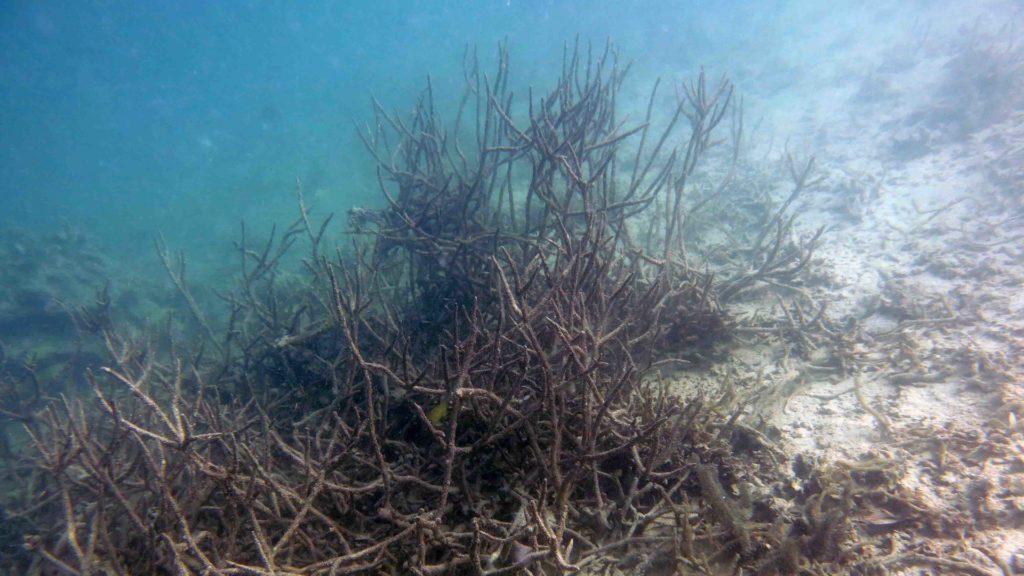
Acropora coral were decimated after severely low-oxygen water shoaled onto a shallow-water reef in Panama over a few days in 2017. (Photo courtesy of Maggie Johnson)
Why are dead zones important?
River deltas and nearby coastlines should be teeming with life, but when nutrient overload turns them into dead zones, fisheries suffer. The areas where fish can survive become smaller, which changes interactions between fish and their predators, including people. Gulf shrimp are one of the biggest fisheries in the United States, but harvests vary widely from one year to the next. Some years, the dead zone covers larger areas, and in those years, shrimp can be found only along the margins, where they survive but are slow to grow. Fisheries, essential to many people’s livelihoods, may be closed to allow shrimp time to grow larger before harvest. Similarly, Atlantic cod grow slowly in low-oxygen waters, and their population in the Baltic Sea may not survive long-term.
Because oxygen diffuses into water at the surface, it’s only deeper waters that are affected by low-oxygen conditions. Fish such as shark and tuna that typically spend their time in deeper waters respond to dead zones by moving into the shallows. This makes them easier to fish and can make populations seem more abundant than they really are, which can lead to overfishing. It also has the potential to alter entire food webs, as these predators feed on new and different kinds of prey.
What are scientists doing about dead zones?
Researchers have uncovered the link between dead zones and nutrient overload from land. This can come from fertilizers or from improperly treated sewage, both of which can be solved with changes in fertilizer use and sewage treatment. Mitigation strategies work: In Florida, the city of Tampa Bay restored wetland and seagrass beds by reducing nutrient levels entering the coastal area. The nine countries that surround the Baltic Sea are working to reduce nutrient levels by implementing sustainable farming practices and improving the quality of water discharged from sewage treatment plants.
But the issue goes beyond nitrogen and phosphorous levels. As waters warm, the surface separates into a layer that’s distinct from colder waters beneath. Such stratification greatly reduces mixing, preventing oxygen from reaching deeper waters. Warmer waters also hold less oxygen, which means those surface waters cannot absorb as much oxygen to begin with. In addition to reducing nutrient discharge, addressing climate change will be an essential step in reducing the size of dead zones around the globe.
Limburg, K.E. et al. Ocean Deoxygenation: A Primer. One Earth. Vol. 2. January 24, 2020. doi: 10.1016/j.oneear.2020.01.001.
NOAA. Dealing with Dead Zones: Hypoxia in the Ocean. https://oceanservice.noaa.gov/podcast/feb18/nop13-hypoxia.html
NOAA Fisheries. Brown shrimp. https://www.fisheries.noaa.gov/species/brown-shrimp
NOAA. What is a dead zone? https://oceanservice.noaa.gov/facts/deadzone.html
Federer, A. et al. Assessing the influence of ocean alkalinity enhancement on a coastal phtyoplankton community. Biogeosciences. Preprint. 2022. doi: 10.5194/bg-2022-17.
Lubofsky, Evan. The ocean has a serious case of heartburn. Is relief on the way? Oceanus. July 1, 2021. https://www.whoi.edu/oceanus/feature/ocean-alkalinity/
News Releases
[ ALL ]
From Oceanus Magazine
Our eyes on the seafloor
A Q&A with WHOI marine microbiologist Maria Pachiadaki on sampling the deep ocean with Jason
The hypoxic reef
Scientists say a lack of oxygen might be stressing tropical reefs even more than warming temperatures, acidification, and pollution. But the combination of these factors spells disaster for coral.
Can Animals Live Without Oxygen?
In 2010, a research team garnered headlines when it published evidence of finding the first animals living in oxygen-free conditions at the bottom of the sea. But a new study…
Oil, Microbes, and the Risk of Dead Zones
In the scramble to get to the Gulf of Mexico to study the Deepwater Horizon oil spill, Ben Van Mooy found out firsthand why the National Science Foundation called its…
Red Tides and Dead Zones
The most widespread, chronic environmental problem in the coastal ocean is caused by an excess of chemical nutrients. Over the past century, a wide range of human activities—the intensification of agriculture, waste disposal, coastal development, and fossil fuel use—has substantially increased the discharge of nitrogen, phosphorus, and other nutrients into the environment. These nutrients are moved around by streams, rivers, groundwater, sewage outfalls, and the atmosphere and eventually end up in the ocean.


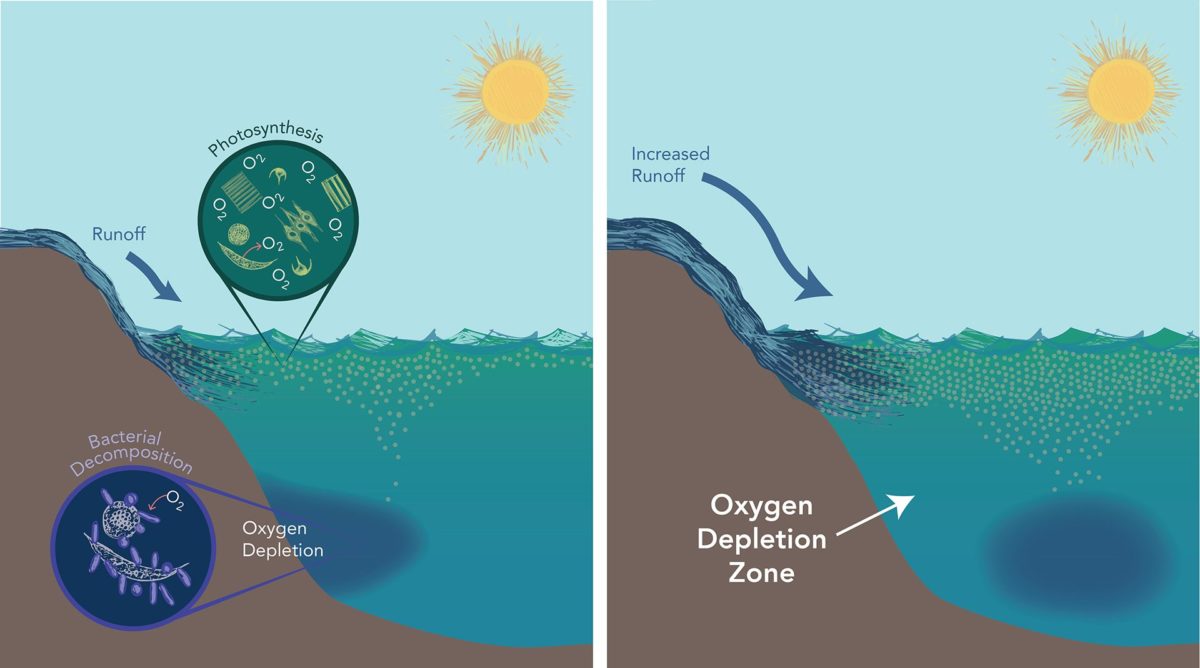
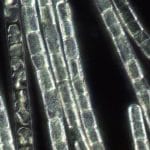 Biogeochemistry
Biogeochemistry 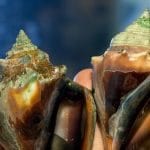 Ocean Acidification
Ocean Acidification